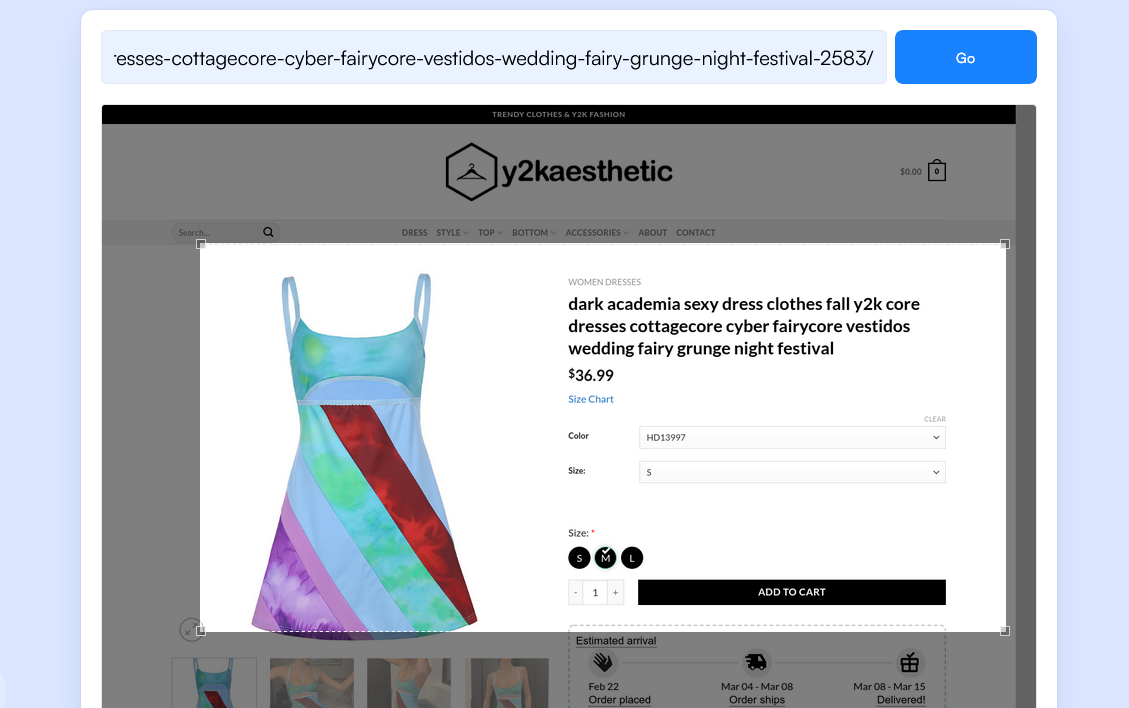6 Great eCommerce Monitoring Tools
By Emily Fenton
Updated March 6, 2023

7 Great Ecommerce Monitoring Tools for Online Retailers
Ecommerce is a fast-paced industry that’s always changing. Buyers and sellers need all the information they can get when doing transactions, making it essential to monitor websites for changes.
Gathering intelligence and analyzing data can help you improve your ecommerce strategy and glean insights based on customer and competitor behavior. Unfortunately, it’s nearly impossible to collect important information from multiple online retailers at once without competitive intelligence software.
There are many ecommerce tools that make it easier to track multiple web pages for prices, sales, and branding strategies. Whether you’re an individual seller or part of a multinational business, you can benefit from having a comprehensive tool capable of notifying users whenever online retailers change web pages.
Here are a variety of tools available to users who want to improve their ecommerce capabilities.
Visualping
Visualping offers users a simple but powerful interface for staying on top of website changes, including those related to minimum advertised pricing (MAP) monitoring.
What is MAP monitoring, exactly? This all-important task involves reviewing the prices your retailers and resellers set so you can confirm that they’re abiding by your minimum advertised pricing policy.
If you want to be able to monitor these and other changes, there’s no better option than Visualping. Once set up, you’ll receive notifications immediately when your chosen web page is updated.
Getting started is easy, and there’s no limit to the types of information you can monitor. Whether you need information about pricing, marketing, or branding, Visualping has you covered.
You’ll receive an email, Slack message, or even a text whenever changes occur, making it one of the most simple tools to choose from for competitor and resller monitoring. Visualping works perfectly for retailer price monitoring and has many features that allow you to collect other valuable data.

Google Analytics
Another option for monitoring online retailers is Google Analytics (GA).
GA is a free and incredibly powerful piece of software that’s become the standard across the industry for website monitoring and digital analytics. Since its inception, it’s radically transformed how digital advertising works and offers great value to companies that opt to use it.
With GA, you can keep track of the following:
- Top pages
- Traffic
- Time on page
- User devices
- Bounce rates
For many online sellers, the ability to access advanced ecommerce analytics through Google’s service is indispensable. Companies of all sizes use it to measure ROI, improve SEO, and generate reports.
GA allows you to carefully monitor competitors and ensure that you’re staying up-to-date with the latest market changes.
Matomo (Formerly Piwik)
Since Matomo is released under a GPL license, anyone can use, alter, or distribute the code as needed.
This flexibility has made it the de-facto GA substitute for monitoring online retailers’ products and services. And since it abides by the General Data Protection Regulation (GDPR), it’s considered one of the most secure options for storing private information.
Matomo is privacy-oriented, and users have complete ownership over their data. Anyone can sign up for the free version, but you’ll need your own server and enough technical know-how to get everything up and running.
For $29 a month, users can access the premium tier, which gives them cloud-based services on company servers. Users love Matomo since it works seamlessly with the biggest ecommerce CMS platforms, including WordPress, Shopify, and Squarespace.
Hotjar
Hotjar is a modern analytics tool that allows companies to collect user data to get a sense of how users feel about their products. It uses heatmaps and screen recordings to visually represent user behavior.
Essentially, Hotjar’s services allow companies to glean unique insights into complex behaviors happening at the macro level. One of the best things about it is that it gives you insights into problems resulting from poor customer experiences, allowing you to make adjustments on the fly.
Hotjar is a great way to manage high bounce rates or cart abandonment since it can show the specific actions taken beforehand. If you want to ensure that users have a positive experience on your website, Hotjar could be the solution you need.
Woopra
Woopra offers real-time analytics tracking and management features that companies can deploy to collect information about customers who visit the site.
For many, Woopra is the go-to tool for monitoring the customer’s journey and getting a picture of their experience, positive or negative. It was designed to give ecommerce retailers insights into consumer behavior.
With Woopra, you can easily target and troubleshoot problems like high cart abandonment rates to improve the checkout process. If you want to quickly identify and resolve sticking points, Woopra might be your best option.
Although it comes with a bit of a learning curve, you can take advantage of the wide variety of documentation and community support available to get things done.
Smartlook
For those who want to understand how visitors really feel about their website, Smartlook is a popular tool for looking at conversion rates and other factors that indicate consumer perception of your website.
Smartlook makes it easy to share insights and data with partners so you can collaborate on projects or build new solutions to existing marketing problems.
You can use it to improve the efficiency of your website by recording user clicks and mouse movements. It gives you an in-depth picture of user sessions through the use of heatmap data and an integrated dashboard.
While Smartlook can be an excellent tool for gathering analytics, every website has its own specific needs. As such, it might not be able to handle everything you throw at it.
Improve Your Ecommerce Monitoring with Visualping
Online retailers rely on a variety of tools to improve their digital presence. However, not all monitoring software is created the same.
If you rely on a hard-to-use or outdated monitoring solution, you could miss out on some crucial information associated with consumer behavior. With Visualping, you get a simple interface that can handle as many web pages as you want to keep tabs on.
Visualping is transforming the way businesses handle ecommerce monitoring. With integrated collaboration tools, advanced reporting, and dedicated support options, your business will be fully equipped to track changes even as its number of products grows.
If you want a website change, detection, and alerts system that works for you, Visualping will give you the peace of mind you’re after. Businesses use Visualping daily to get back-in-stock alerts, price changes, and promotions sent straight to their inbox.
Find out for yourself why Visualping is considered one of the best tools for ecommerce monitoring. Try it for free today!
Sign up for the #1 web monitoring tool for for ecommerce
Get notified of any impactful ecommerce updates - like prices, inventory, SEO and brand reputation - from anywhere online.
Emily Fenton
Emily is the Product Marketing Manager at Visualping. She has a degree in English Literature and a Masters in Management. When she’s not researching and writing about all things Visualping, she loves exploring new restaurants, playing guitar and petting her cats